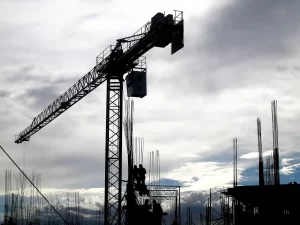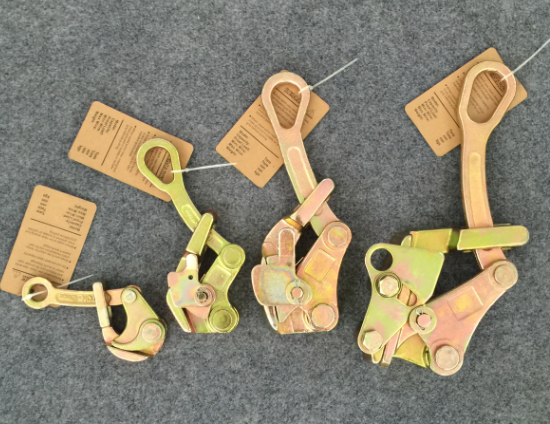Wire rope grips, also known as wire rope clips or cable clamps, are small yet vital mechanical devices used to secure the loose end of a wire rope. They are simple but essential tools across a broad range of industries, from maritime and construction to mining and transportation. Understanding the proper usage methods and the occasions where wire rope grips are applicable is critical for ensuring safety and structural integrity.
What Is a Wire Rope Grip?
A wire rope grip typically consists of three parts:
-
U-Bolt: A U-shaped bolt that fits over the wire rope.
-
Saddle: The base component that the U-bolt screws into.
-
Nuts: Used to tighten the U-bolt onto the saddle and grip the rope.
Wire rope grips are primarily used to form a temporary or semi-permanent eye or loop in a wire rope, or to join two wire ropes together.
Usage Method of Wire Rope Grips
Using wire rope grips correctly is essential to ensure the strength of the connection and prevent accidents. Here’s a step-by-step method for proper usage:
1. Selection of the Correct Wire Rope Grip
First and foremost, selecting the correct size of the wire rope grip is crucial. The size must match the diameter of the wire rope exactly. Using a grip that is too large or too small will compromise the holding power.
Example:
-
A 10mm diameter wire rope requires a 10mm wire rope grip.
2. Preparation of the Wire Rope
Before attaching the grip, inspect the wire rope for any damage or fraying. A damaged rope should not be used as it can fail under load.
If forming a loop or an eye, you may also use a thimble inside the loop to prevent the wire rope from excessive bending and to increase the longevity of the rope.
3. Installation Procedure
Follow these steps carefully:
a. Positioning the First Grip:
-
Place the first wire rope grip one saddle width from the end of the dead end of the rope.
-
Always ensure the saddle rests on the live end (the loaded or working side of the rope), and the U-bolt rests on the dead end (the short, loose side).
-
A common saying in the industry to remember this is: “Never saddle a dead horse.” This reminds users that the saddle should always be on the live end.
b. Tightening the Nuts:
-
Tighten the nuts evenly to the manufacturer’s recommended torque specification. Over-tightening or under-tightening can weaken the connection.
c. Adding Additional Grips:
-
Add additional grips along the rope. For a proper connection:
-
3 grips are typically recommended for ropes up to ½ inch (13mm) diameter.
-
4 grips for ropes from ⅝ inch to ¾ inch (16-19mm) diameter, and so forth.
-
-
Spacing between grips should be about six rope diameters apart.
d. Final Tightening:
-
After placing all grips, retighten them in sequence.
-
Load the wire rope initially with a test load (not exceeding the working load limit) to seat the rope and grips properly.
-
Retighten the nuts again after the initial load.
4. Periodic Inspection and Retightening
Wire rope grips can loosen over time due to vibration, load changes, or rope elongation. It’s vital to regularly inspect and retighten them as needed to maintain the integrity of the connection.
Applicable Occasions for Wire Rope Grips
Wire rope grips are used in many different industries and for various applications. Below are the key occasions where they are most applicable:
1. Temporary Rigging
Wire rope grips are often used for temporary rigging applications where a quick assembly and disassembly are required.
Examples:
-
Construction sites for lifting or pulling.
-
Temporary suspension bridges.
-
Theater stage rigging for setting up props and lighting.
Because they are easy to install and remove, wire rope grips provide flexibility for projects with changing rigging needs.
2. Lifting Applications
In many industrial settings, wire rope grips are used to create lifting slings or loops at the end of a wire rope.
Important Note:
For critical or heavy-duty lifting, manufacturers often recommend swaged or mechanically pressed terminations instead of wire rope grips because they offer greater reliability. When using wire rope grips for lifting, it’s vital to adhere to all safety guidelines and standards.
3. Fencing and Guardrails
Wire rope fencing is common in agriculture, security installations, and even road safety barriers. Wire rope grips are frequently used to secure the ends of wire ropes when creating fencing systems.
Example:
-
Wire rope guardrails on highways use wire rope grips to maintain tension and secure the cables at anchor points.
4. Marine and Offshore Use
In marine environments, wire rope grips are used for mooring lines, securing cargo, and rigging tasks.
Given the harsh environmental conditions (saltwater exposure), it is critical to use wire rope grips made of stainless steel or hot-dip galvanized steel to resist corrosion.
5. Mining and Logging
Wire ropes are heavily used in mining and logging industries to move heavy loads, pull machinery, or transport logs. Wire rope grips allow workers to quickly assemble or repair rigging systems in the field.
Example:
-
In a logging operation, if a cable gets damaged, workers can splice ropes together with wire rope grips until a permanent repair is possible.
6. Telecommunications and Utility Work
Wire rope grips are also used to support utility poles, antennas, and other tall structures.
They provide a secure method to anchor guy wires, which are essential for maintaining the stability of these structures.
7. Event Staging and Exhibition Setups
In the entertainment industry, wire rope grips are used to suspend lighting rigs, backdrops, and other equipment safely and reliably.
Types of Wire Rope Grips
There are several types of wire rope grips, and selecting the right one depends on the specific application:
1. Malleable Iron Grips
These are economical and suitable for light-duty or non-critical applications. They are not recommended for heavy lifting or life-safety uses.
2. Forged Steel Grips
Made from drop-forged steel, these grips are stronger and more reliable than malleable iron ones. They are suitable for heavy-duty, load-bearing applications.
3. Double Saddle Grips
Instead of a U-bolt and saddle, these grips have two saddles with bolts on both sides. They offer a more even clamping force on the wire rope but are less common.
Safety Considerations
Proper use of wire rope grips is crucial for maintaining safety in any application. Here are key points to keep in mind:
-
Use the right number of grips. Underuse can lead to failure.
-
Torque correctly. Always use a torque wrench and follow the manufacturer’s specifications.
-
Periodic inspection. Retighten as needed, especially after the first load cycle.
-
Environmental resistance. In corrosive environments, use stainless steel or galvanized grips.
-
Critical applications caution. For life-safety or critical load-bearing applications, engineered terminations like swaging are preferred over grips.
Common Mistakes to Avoid
-
Wrong Saddle Placement:
-
Always put the saddle on the live end of the wire rope.
-
-
Using Too Few Grips:
-
Follow the guideline for the number of grips based on the rope diameter.
-
-
Inadequate Tightening:
-
Loose grips will cause slippage and potentially dangerous failures.
-
-
Improper Grip Spacing:
-
Maintain about six rope diameters between each grip for optimal performance.
-
-
Ignoring Load Testing:
-
Always perform a proof load test after installation to ensure safety.
-
Conclusion
Wire rope grips are simple yet crucial tools that, when used correctly, can create strong and secure wire rope terminations for a wide range of applications. Whether used in construction, marine operations, mining, or entertainment industries, understanding the correct usage method and applicable occasions is essential for ensuring safety and performance.
Correct installation techniques — including the number of grips, their placement, torque specifications, and periodic maintenance — cannot be overemphasized. By adhering to industry best practices and selecting the right type of wire rope grip for the environment and load, users can maximize the reliability and safety of their wire rope systems.

